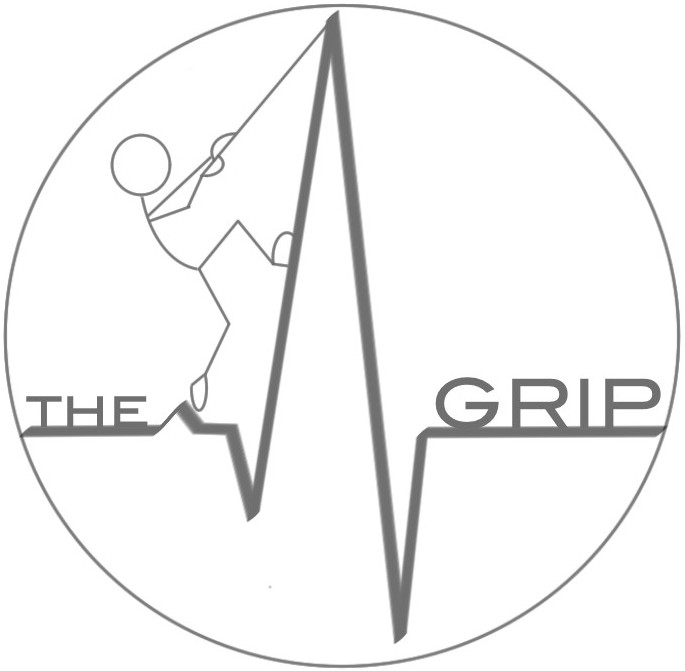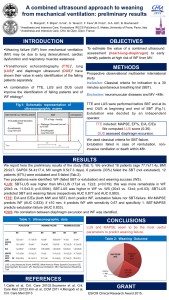Mojoli F, Bouhemad B, Mongodi S, Lichtenstein D. Am J Respir Crit Care Med. 2018 Oct 29. doi: 10.1164/rccm.201802-0236CI. Abstract Point-of-care ultrasound is increasingly used at the bedside to integrate the clinical assessment of the critically ill; in particular, lungultrasound greatly developed in the last decade. This review describes basic lung ultrasound signs and focuses on their applications in critical […]

By A. Orlando – White paper Background Asynchronies are a frequent issue in ventilated patients. They represent a mismatch between the inspiratory and expiratory times of patient and ventilator, and thus a failure to provide ventilated patients with optimal assistance. This results in prolonged mechanical ventilation, difficult wean-ing, reduced patient comfort, an increased risk of diaphragmatic […]
Chiumello D, Mongodi S, Algieri I, Vergani GL, Orlando A, Via G, Crimella F, Cressoni M, Mojoli F. Crit Care Med. 2018 Jul 25. doi: 10.1097/CCM.0000000000003340 Abstract OBJECTIVES: Lung ultrasound is commonly used to evaluate lung morphology in patients with acute respiratory distress syndrome. Aim of this study was to determine lung ultrasound reliability in […]
Lluís Blanch, Jean-Michel Arnal, Francesco Mojoli ICU Management & Practice, Volume 18 – Issue 1, 2018 Dr. Lluís Blanch, Dr. Jean-Michel Arnal and Prof. Francesco Mojoli discuss why patient-ventilator synchrony is important, how to detect asynchronies, and technical solutions for optimising synchronisation. Report on the Hamilton Medical symposium, LIVES 2017, Vienna, Austria, 26 September […]
F. Mojoli, S. Mongodi ICU Management & Practice. 2017;17(3):186-9. In the last years, ultrasound (US) became an essential tool in the hands of the intensivist and is now recommended both for procedural guidance and diagnostic purposes. Point-of-care ultrasound (POCUS) is an immediately available and repeatable, non-irradiating bedside tool integrating the clinical examination. While echocardiography […]
Spadaro S, Karbing DS, Fogagnolo A, Ragazzi R, Mojoli F, Astolfi L, Gioia A, Marangoni E, Rees SE, Carlo VA. Simul Healthc. 2017 Aug 18. doi: 10.1097/SIH.0000000000000249 Abstract INTRODUCTION: Advances in knowledge regarding mechanical ventilation (MV), in particular lung-protective ventilation strategies, have been shown to reduce mortality. However, the translation of these advances […]
S. Mongodi, F. Mojoli, G. Via, G. Tavazzi, F. Fava, M. Pozzi, G. A. Iotti, B. Bouhemad
Introduction: Weaning failure (WF) from mechanical ventilation (MV) may be due to lung derecruitment, cardiac dysfunction and respiratory muscles weakness. Transthoracic echocardiography (TTE) [1], lung ultrasound (LUS) [2] and diaphragm ultrasound (DUS) [3] have shown their value in early identification of the failing patients separately. A combination of TTE, LUS and DUS could improve the identification of failing patients and of WF etiology [4]. We aimed to estimate the value of a combined ultrasound assessment (heart-lung-diaphragm) to early identify patients at high risk of WF from MV.
Methods: Prospective observational multicenter international study including all patients undergoing a 30’ spontaneous breathing trial (SBT) before extubation. Patients with neuromuscular diseases and MV <48 hours were excluded. TTE and LUS were performed before SBT and at its end; DUS at beginning and end of SBT. TTE included: MAPSE (mitral annulus plane systolic excursion), EF% (ejection fraction), E/A, E/Ea. We computed LUS score (0–36) [2]. DUS assessed diaphragm excursion. Extubation was considered as failed in case of reintubation, non-invasive ventilation or death within 48 hours. We used classical criteria for SBT failure. Extubation was decided by an independent operator.
Results: We enrolled 18 patients (age 77.7 ± 11.4 yrs, BMI 29.9 ± 7, SAPSII 54.4 ± 17.4, MV length 9.5 ± 7.3 days). 6 patients (33%) failed the SBT and were not extubated. 12 patients (67%) were extubated; 5 failed. Two populations were identified: WF (failed SBT or extubation) and weaning success (WS). LUS: SBT-LUS was higher than MVLUS in the whole population (17 ± 4 vs. 12 ± 3; p = 0.019); this was more remarkable in WF (20 ± 3 vs. 11 ± 3; p = 0.0004). SBT-LUS was higher in WF vs. WS (20 ± 3 vs. 13 ± 4; p = 0.03). SBT-LUS predicted SBT and weaning failure (respectively AUC 0,877 and AUC 0,883). TTE: E/A and E/Ea (both MW and SBT) did not predict WF, extubation failure nor SBT-failure. MV-MAPSE predicted WF (AUC 0,833); if < =10 mm it predicted WF with sensitivity 0.67 and specificity 1. SBTMAPSE predicted extubation failure (AUC 0.833). DUS: No correlation between diaphragm excursion and WF was identified.
Conclusions: LUS and MAPSE seem to be the most useful parameters to predict weaning failure.
References 1. Caille et al., Crit Care 2010 2. Soummer et al., Crit Care Med 2012 3. Kim et al., CCM 2011 4. Mongodi et al., Crit Care Med 2013
Grant The research project received the ESICM Clinical Research Award 2015.
Pag. 30 From Critical Care
Bianzina S, Cornara P, Rodi G, Tavazzi G, Iotti GA, Mojoli F, Braschi A Intensive Care Medicine Experimental 2016, 4(Suppl 1):27;116 Introduction: Pulmonary alveolar proteinosis (PAP) is a rare disorder characterized by a perturbation in surfactant homeostasis, resulting in its accumulation within alveolar spaces, with a consequent development of severe hypoxemia. Whole lung lavage (WLL) is a complex […]
Mojoli F, Orlando A, Bianchi I, Torriglia F, Bianzina S, Pozzi M, Iotti GA, Braschi A, PLUG Working Group Intensive Care Medicine Experimental 2016, 4(Suppl 1):27;597 Introduction: Patient-ventilator asynchronies are associated with poor outcome. It was suggested that bedside analysis of ventilator waveforms may help detecting different types of asynchrony and setting properly […]
Mojoli F, Orlando A, Bianchi I, Torriglia F, Bianzina S, Pozzi M, Iotti GA, Braschi A, PLUS Working Group Intensive Care Medicine Experimental 2016, 4(Suppl 1):27;595 Introduction: Standard waveforms displayed on the ventilator screen may help detecting whether the ventilator is switching form inspiration to expiration at the right time, thus allowing appropriate […]
